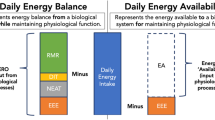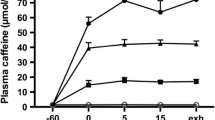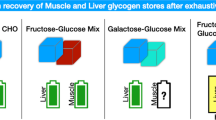Summary
In vitro lymphocyte function and the mobilisation of peripheral blood leucocytes was examined in eight trained subjects who undertook an incremental exercise test to exhaustion and a series of interval training sessions. Venous blood samples were obtained before the incremental test, immediately after, and 30, 60, and 120 min after the test. Interval training sessions were undertaken on separate days and the exercise intensities for each of the different sessions were 30%, 60%, 90% and 120% of their maximal work capacity respectively, as determined from the incremental exercise test. There were 15 exercise periods of 1-min duration separated by recovery intervals of 2 min in each session. Venous blood samples were obtained immediately after each training session. Significant increases in lymphocyte subpopulations (CD3+, CD4+, CD8+, CD20+, and CD56+) occurred following both maximal and supramaximal exercise. This was accompanied by a significant decrease in the response of cultures of peripheral blood lymphocytes to Concanavalin A (ConA), a T-cell mitogen. The state of lymphocyte activation in vivo as measured by CD25+ surface antigen was not, however, affected by acute exercise. The total number of lymphocytes, distribution of lymphocyte subpopulations and in vitro lymphocyte response to ConA had returned to pre-exercise levels within half an hour of termination of exercise but serum cortisol concentrations had not begun to fall at this time. There was a significant decrease in the CD4+:CD8+ cell ratio following exercise; this was more the result of increases in CD3−CD8+ cells (CD8+ natural killer cells) than to CD3+CD8+ cells (CD8+ T-lymphocytes). Decreased responsiveness of T-cells to T-cell mitogens, postexercise, may have been the result of decreases in the percentage of T-cells in postexercise mixed lymphocyte cultures rather than depressed cell function. The cause of this was an increase in the percentage of natural killer cells which did not respond to the T-cell mitogen. The results indicated that while a substantial immediate in vitro “immunomodulation” occurred with acute exercise, this did not reflect an immunosuppression but was rather the result of changes in the proportions of reactive cells in mononuclear cell cultures. We have also demonstrated that the degree of the change in distribution of lymphocyte subpopulation numbers and responsiveness of peripheral blood mononuclear cells in in vitro mitogen reactions increased with increasing exercise intensity. Plasma volume changes may have contributed to some of the changes seen in leucocyte population and subpopulation numbers during and following exercise.
Similar content being viewed by others
References
Cameron K, Morton AR, Keast D (1989) The blood picture and polyclonal lymphocyte responses in vitro, to lymphocyte mitogens, immediately after defined continuous and intermittent exercise. Aust J Sci Med Sport 21:15–19
Crary B, Hauser SL, Borysenko M, Kutz I, Hoban C, Ault KA, Weiner HL, Benson H (1983) Epinephrine-induced changes in the distribution of lymphocyte subsets in the peripheral blood of humans. J Immunol 131:1178–1181
Cupps TR, Fauci AS (1982) Corticosteroid-mediated immunoregulation in man. Immunol Rev 65:133–155
Deuster PA, Curlale AM, Cowan ML, Finkelman FD (1988) Exercise induced changes in populations of peripheral blood mononuclear cells. Med Sci Sport 20:276–280
Dill DB, Costill DL (1974) Calculation of percentage changes in volumes of red blood cells and plasma in dehydration. J Appl Physiol 37:247–248
Espersen GT, Elbaek A, Ernst E, Toft E, Kaalund S, Jersild C, Grunnet N (1990) Effect of physical exercise on cytokines and lymphocyte subpopulations in human peripheral blood. APMIS 98:395–400
Fry RW, Morton AR, Keast D (1991) Overtraining in athletes — an update. Sports Med 12:32–65
Gin W, Christiansen FT, Peter JB (1989) Immune function and the chronic fatigue syndrome. Med J Aust 151:117–118
Keast D, Cameron K, Morton AR (1988) Exercise and the immune response. Sports Med 5:248–267
Khansari DN, Murgo AJ, Faith RE (1990) Effects of stress on the immune system. Immunol Today 11:170–175
Komaroff AL, Goldenberg D (1989) The chronic fatigue syndrome: definition, current studies and lessons for fibromalgia research. J Rheumatol [Suppl] 19:23–27
Lanier LL, Le AM, Phillips JH, Warner NL, Babcock GF (1983) Subpopulations of human natural killer cells defined by expression of the Len 7 (HNK-1) and Leu 11 (NK-15) antigens. J Immunol 131:1789–1794
Mackinnon L (1989) Exercise and natural killer cells — what is the relationship. Sports Med 7:141–149
MacNeil B, Hoffman-Goetz L, Kendall A, Houston M, Arumugam Y (1991) Lymphocyte proliferation responses after exercise in men: fitness, intensity, and duration effects. J Appl Physiol 70:179–185
McCarthy DA, Dale MM (1988) The leucocytosis of exercise — a review and model. Sports Med 6:333–363
Nehlsen-Cannarella SL, Nieman DC, Balk-Lamberton AJ, Markoff PA, Chritton DB, Gusewitch G, Lee JW (1991) The effects of moderate exercise training on immune response. Med Sci Sports Exerc 23:64–70
Nieman DC, Berk LS, Simpson-Westerberg M, Arabatzis K, Youngberg S, Tan SA, Lee JW, Eby WC (1989a) Effects of long endurance running on immune system parameters and lymphocyte function in experienced marathoners. Int J Sports Med 10:317–323
Nieman DL, Johanssen LM, Lee JW (1989b) Infectious episodes in runners before and after a roadrace. J Sports Med 29:289–296
Pedersen BK, Tvede N, Christensen LD, Klarlund K, Kragbak S, Halkjr-Kristensen J (1989) Natural killer cell activity in peripheral blood of highly trained and untrained persons. Int J Sports Med 10:129–131
Tchorzewski H, Lewicki R, Majewska E (1987) Changes in the helper and suppressor lymphocytes in human peripheral blood following maximal physical exercise. Arch Immunol Ther Exp (Warsz) 35:307–312
Yednock TA, Rosen SD (1989) Lymphocyte homing. Adv Immunol 44:313–378
Author information
Authors and Affiliations
Rights and permissions
About this article
Cite this article
Fry, R.W., Morton, A.R., Crawford, G.P.M. et al. Cell numbers and in vitro responses of leucocytes and lymphocyte subpopulations following maximal exercise and interval training sessions of different intensities. Europ. J. Appl. Physiol. 64, 218–227 (1992). https://doi.org/10.1007/BF00626284
Accepted:
Issue Date:
DOI: https://doi.org/10.1007/BF00626284




